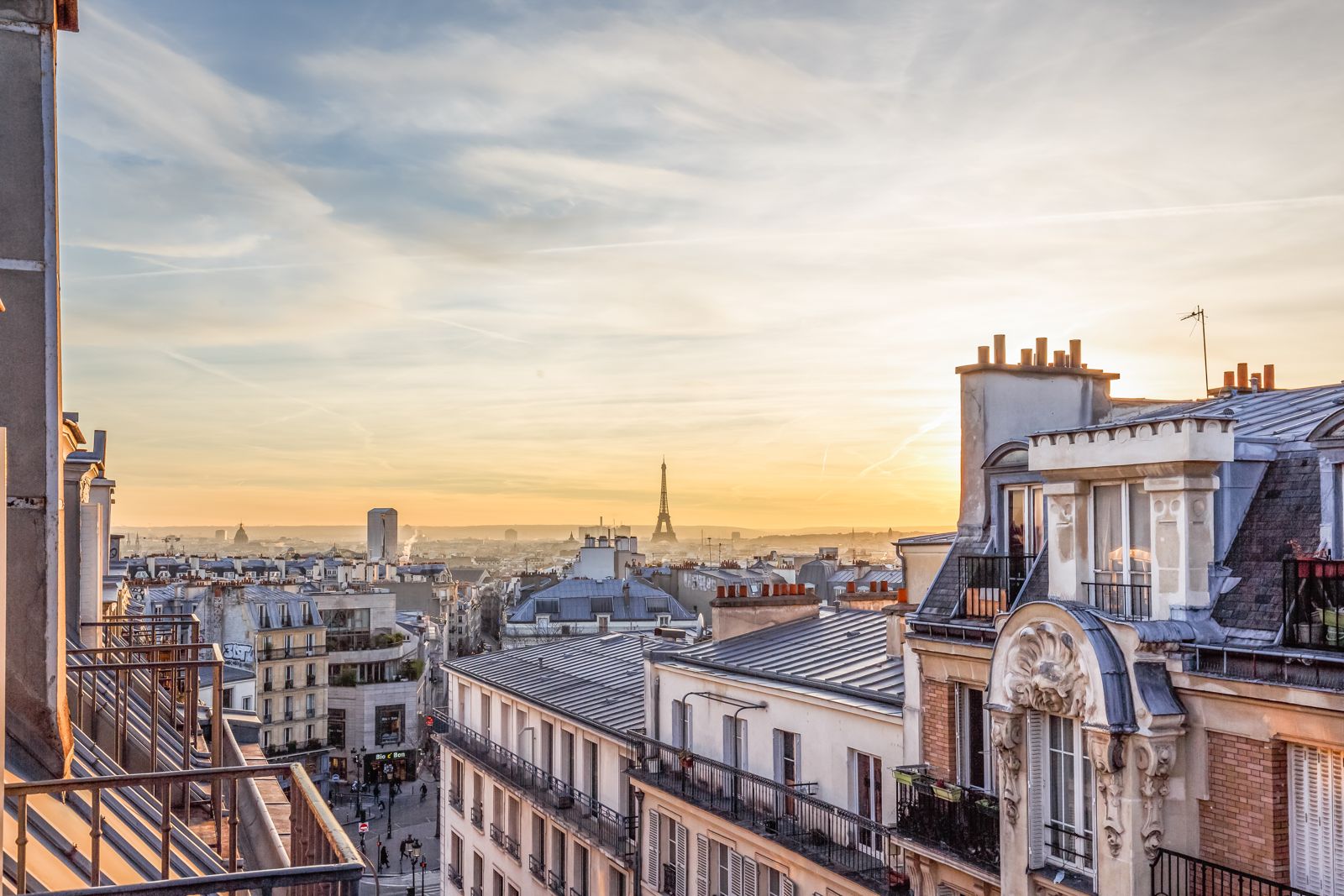After two subdued years, the Paris property market is showing tangible signs of recovery. With a 25% surge in period building apartment sales within the capital compared to the same period last year, buyer confidence is returning. But how solid is this rebound—and is now the right moment to act?
Let’s take a closer look at what’s really happening behind the numbers from the Paris Notaires' Q1 2025 report—and what it means for buyers in today’s market.
A Fragile Recovery—but a Recovery Nonetheless
2024 was one of the quietest years for Paris real estate in recent memory. Against this low base, the first quarter of 2025 looks encouraging. Across Île-de-France, sales of existing homes rose 21% year-on-year. In Paris, the increase is even sharper: 25% more transactions compared to Q1 2024, which confirms the Spring Surge in Buyer Activity we observed in our blog from the beginning of April this year.
However, this uptick must be viewed in context. The market is rebounding from a historically low point, and while sales are up, prices remain below the peaks of 2022.
That said, the Paris market appears to have hit bottom and is now stabilizing. The average price per square meter in the capital was €9,420 in February 2025, with forecasts suggesting it could rise to €9,750 by July—representing a modest 2.7% annual increase.
What’s Driving the Uptick?
Several factors are converging to support this recovery:
Anticipation of higher closing costs: As of April 1st, Paris implemented a permanent increase in transfer taxes, which added urgency to many buyers’ decisions to close deals in Q1.
Improved—but still elevated—interest rates: Rates have eased slightly, improving affordability, especially for buyers with strong financing.
Increased international interest: Many foreign buyers, particularly North Americans, are reentering the market in search of a pied-à-terre or long-term base. Economic and political instability elsewhere continues to position Paris as a safe haven.
Better selection: More properties are returning to the market, including higher-quality listings that had been withheld during the downturn.
A Closer Look at Neighborhood Trends
Not all arrondissements are recovering at the same pace. Paris’ micro-markets continue to show diverse trajectories:
6th arrondissement: The most expensive district in the capital in Q1, with an average of €13,550/m², saw a slight 1.7% annual decrease. Yet key neighborhoods like Saint-Germain-des-Prés remain highly sought after and are showing early signs of price stabilization.
7th arrondissement: While the overall arrondissement saw a slight price decrease, the sought-after Saint-Thomas d’Aquin quarter, where 56Paris is located, remains the most expensive of the City, with average prices at €14,330/m². Certain areas like Gros-Caillou recorded gains of 2.6%. Demand for renovated, move-in-ready properties near the Eiffel Tower and rue de l’Université remains high.
3rd arrondissement: Prices dropped 6.7% year-on-year, to around €11,239/m². Yet well-located properties in the northern Haut Marais continue to attract international buyers, particularly when energy efficiency is high.
4th arrondissement: Despite a 6.2% drop, this area—especially Île Saint-Louis and the Saint-Paul sector—retains strong appeal. Forecasts show a potential 5.2% rebound in pricing this year.
Outer arrondissements (9th to 20th): Several districts once considered secondary are now drawing attention from younger professionals and investors, thanks to relative affordability and neighborhood revitalization. Foreign buyers remain strongly drawn to Montmartre (18th district).
Evolution of Paris Property Prices and Number of Sales (2021-2025) - Sales of Period Building Apartments Surged by 25% in Q1, 2025 - Current average prices per district
So—Is This the Moment to Buy?
We believe the current market presents a genuine opportunity, but one that should be approached with strategic care.
The fundamentals are improving, yet the recovery remains sensitive to broader factors such as inflation, fiscal policy, and geopolitical shifts.
Prices are still below their peak, while quality listings are becoming more available—a rare intersection that could benefit buyers ready to act.
Foreign buyers, especially from the U.S. and Canada, may find timing especially favorable thanks to a strong dollar, softened prices, and more negotiable terms.
In short, the tide has turned: early signs of a healthier, more balanced market are emerging. That said, it’s not a seller’s market just yet. This is a transitional moment—one where informed, well-guided buyers can secure excellent value in a city that continues to captivate.
At 56Paris, we help our clients seize just these kinds of opportunities. Whether you're searching for a refined pied-à-terre or planning a longer-term investment, our team is here to guide you with local knowledge, market insight, and a deep understanding of Paris’ unique rhythm.
Contact us to find out if this rebound could be your moment to make Paris home.
